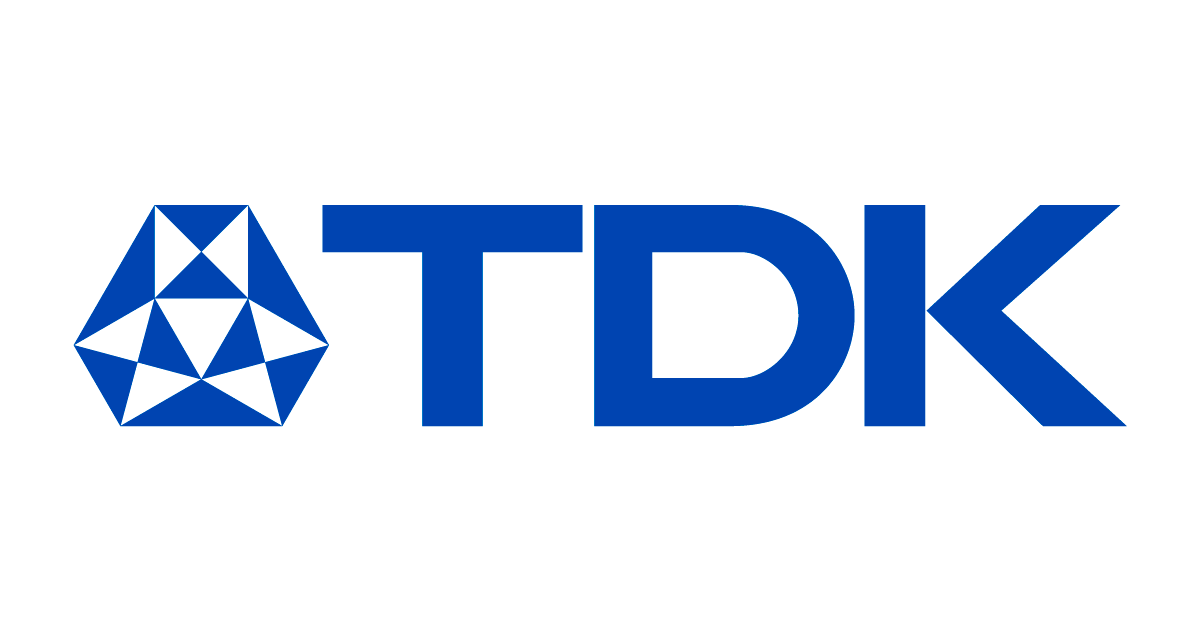- Bank of Japan’s Noguchi advocates gradual interest rate hikes Reuters
- Exclusive: BOJ preps markets for near-term hike as weak yen overshadows politics Reuters
- NZD/JPY eyes breakout as RBNZ signals end of cuts FXStreet
- Bank of Japan’s Noguchi advocates gradual interest rate hikes The Mighty 790 KFGO
- Japan Manufacturers’ Union to Target $77 Monthly Base Pay Hike Next Year US News Money
Author: admin
-
Bank of Japan's Noguchi advocates gradual interest rate hikes – Reuters
-

The man who changed Foxconn and graphite ambitions in the US
Hi everyone! This is Lauly, waving hello from Taipei, where we have finally welcomed the arrival of winter. November has passed faster than I expected, as I spent quite some time working on several stories about Foxconn, a key Nvidia and Apple supplier and the world’s biggest contract electronics maker.
I made a short trip to Tokyo at the beginning of this month, conducting an exclusive interview with Foxconn chair Young Liu when he attended Nikkei Forum’s Global Management Dialogue. The interview was even more fruitful than I anticipated. The conversation was natural and smooth, and Liu was frank about sharing Foxconn’s plans in Japan and the US. He also patiently explained his definitions of different levels of robotics used in smart factories.
Leading the contract electronics manufacturing giant since mid-2019, Liu’s personality and management style are very different from his predecessor Terry Gou, Foxconn’s founder and former chair, according to industry analysts and former and current Foxconn employees I spoke with. Reporters like me can also feel a difference. For starters, Liu always greets the media with a big smile, no matter what the occasion. Some other reporters who have covered the company for years describe him as Foxconn’s “underground chief marketing officer”, a characterisation which I don’t disagree with.
Foxconn’s annual tech day was another highlight this month, showcasing a wide variety of the company’s latest technologies, ranging from electric vehicles and semiconductors to smart city solutions and humanoid robots. Of course Nvidia’s latest GB300 NVL72 server system was also highlighted.
It was an exciting event, though If I had to nitpick about one thing, it would have been better not to hear the Foxconn theme song (which was made and produced after Liu became chair) for hours on end. The song itself is nice, but I had the tune stuck in my head for the whole night after I left the venue.
On a different note, thanks to my colleague Annie Cheng Ting-Fang, I had the opportunity to join her exclusive interview with former Intel CEO Pat Gelsinger, who is now a general partner of venture capital Playground Global.
It was an insightful interview that I enjoyed a lot. Gelsinger touched on many topics from the outlook for AI and the tech ecosystems in Taiwan and Japan to the rebirth of the chipmaking industry in the US.
Intel was also caught up in another big story recently: TSMC filed a lawsuit against Lo Wei-jen, a former executive, over suspicions he leaked sensitive information to Intel, which is also an important client to the Taiwanese company. The lawsuit came a week after Taiwan’s prosecutors launched an investigation against the former executive for possible violations of the national security law. In response, Intel said it stands by its decision to hire Lo and said it had no reason to believe the allegations of trade secret thefts.
It is rare for the world’s two top chipmakers to be caught in such a public disagreement — TSMC even filed a statement on its strongly worded lawsuit with the Taiwan Stock Exchange. It is worth continuing to monitor how the situation develops, as it may have layers of implications for the global tech industry, national security and geopolitics.
Please contribute to our New Year’s survey! We want to know your thoughts on what’s ahead for Asia in 2026 for an upcoming “Big in Asia” feature. The survey will be open until December 8.
Chattanooga challenger
Australia-founded Novonix is building what it says will be North America’s first large-scale production facility for synthetic graphite in Chattanooga, Tennessee, part of a broader US attempt to break China’s dominance in critical materials, Nikkei Asia’s Pak Yiu writes.
Graphite is a crucial ingredient in making batteries used in a wide range of applications like electric vehicles and energy storage systems. It was identified as a strategic resource and a supply chain vulnerability in former US President Joe Biden’s supply chain review report in 2021 due to China’s massive market share in the material.
More than 85 per cent of the world’s supply of graphite came from China last year, according to the International Energy Agency. China’s market share for battery-grade graphite was 96 per cent, while Japan produces just over 2 per cent.
Opening up a lead
This year for the first time, China has overtaken the US in the global market for “open” artificial intelligence models, gaining a crucial edge over how the powerful technology is used around the world, writes the Financial Times’ Melissa Heikkilä.
New data from open source AI start-up Hugging Face and the Massachusetts Institute of Technology shows a big shift in the concentration of power in AI. The total share of downloads of new Chinese-made open models rose to 17 per cent in the past year. The figure surpasses the 15.8 per cent share of downloads from American developers such as Google, Meta and OpenAI.
Open models — which are free to download, modify and integrate by developers — make it easier for start-ups to create products and researchers to improve them.
While US labs have moved towards closed models in the race to build the cutting-edge technology, China has pushed to release open systems that can be adopted widely by the broader AI community. Experts say widespread adoption of China’s open models could have huge consequences for what the future of AI looks like.
A new direction
You probably know Jensen Huang is the chair and CEO of Nvidia, the world’s most valuable AI chip developer, but do you know who leads the company that makes Nvidia’s AI server systems? Meet Young Liu, the man who orchestrated Foxconn’s pivot from making iPhones to AI servers.
Liu took over as chair of the world’s largest contract electronics maker from founder Terry Gou in 2019. It was a rather challenging time for the Taiwanese company, writes Nikkei Asia’s Lauly Li. Foxconn was highly reliant on smartphones, on production in China and on Apple, its biggest client. At the same time, it was walking a tightrope between Washington and Beijing.
In just six years, Liu has steered the manufacturing empire — which is China’s largest private employer, with close to 1mn staff and contract workers — to diversify its production footprint and strengthen its position in the AI supply chain. He has also made the company less reliant on a single top decision maker, fended off enormous pressure from competitors and navigated geopolitical uncertainties and the Covid pandemic.
The company’s share price has tripled since Liu took over, surging in particular over the last three years as he reoriented Foxconn towards AI technologies and aligned the company closely with chipmaker Nvidia.
A rapid roadmap
Rapidus, Japan’s fast-rising homegrown contract chipmaker, plans to start building its second plant in 2027 and aims to produce 1.4-nanometre chips as early as 2029 in a race to narrow the gap with Taiwan Semiconductor Manufacturing Co, the world’s largest contract chipmaker, write Nikkei’s Ryo Mukano and Hajime Tsukada.
The Japanese chipmaker successfully began pilot production of its 2-nm chips in Hokkaido this summer, marking a milestone since breaking ground on the plant in 2023.
Rapidus plans to begin mass production of 2-nm chips in 2027 as it moves ahead with construction of the second plant, which could also produce 1-nm chips in addition to 1.4-nm products.
TSMC, Intel of the US, Samsung of South Korea and Rapidus are the only companies in the world pursuing such cutting-edge chip production technologies. China’s pace has slowed due to Washington’s export controls that limit its ability to access critical chipmaking equipment and materials.
The Rapidus project is estimated to cost several trillion yen. The Japanese government will invest hundreds of billions of yen in the company, part of which will be used for research and development.
Suggested reads
-
SoftBank issues cumulative $64bn in retail bonds to power AI ambitions (Nikkei Asia)
-
VW says it can halve EV development costs with ‘Made in China’ car (FT)
-
WeRide CEO bullish on growth beyond China and outpacing self-driving rivals (Nikkei Asia)
-
TSMC sues former top executive who joined US rival Intel (FT)
-
Foxconn subsidiary aims to double Vietnam revenue on AI boom in 2026 (Nikkei Asia)
-
South Korea’s homegrown rocket makes 3rd successful launch (Nikkei Asia)
-
Donald Trump and Xi Jinping hold first call since trade truce (FT)
-
Alibaba’s overseas business unit makes profit for the first time (Nikkei Asia)
-
EU to tighten investment rules to stand up to China (FT)
-
Taiwan minister says US will not put ‘punishing’ tariffs on chip sector (FT)
#techAsia is co-ordinated by Nikkei Asia’s Katherine Creel in Tokyo, with assistance from the FT tech desk in London.
Sign up here at Nikkei Asia to receive #techAsia each week. The editorial team can be reached at techasia@nex.nikkei.co.jp
Continue Reading
-
-

Asian shares rise, taking their cue from Wall Street’s winning streak
MANILA, Philippines — Asian shares rose on Thursday, taking their cue from Wall Street, where a winning streak extended to a fourth straight day.
U.S. futures were nearly unchanged while oil prices declined.
Japan’s Nikkei 225 added 1% to 50,069.33 as investors bet that the Federal Reserve will cut interest rates at its Dec. 10 meeting.
The Japanese government also reportedly plans to issue 11 trillion yen ($70.5 billion) in new bonds to fund its economic package. Tech-related stocks advanced, with SoftBank Group jumping 2.8% and Kioxia Holdings up 5.7% following a nearly 15% rout the day before.
In Chinese markets, Hong Kong’s Hang Seng index picked up 0.3% to 25,927.96, while the Shanghai Composite index edged 0.1% higher, to 3,883.01.
Gains were tempered by data that showed profits for the first ten months of 2025 at major Chinese industrial firms rose a lackluster 1.9% year-on-year, down from 3.2% growth in the previous period.
In South Korea, the Kospi added 0.7% to 3,986.54 after the Bank of Korea also kept its policy rate unchanged at 2.5%, supporting financial stability amid a weakened currency and market concerns on rising housing prices.
Australia’s S&P/ASX 200 rose less than 0.1% to 8,610.50 while Taiwan’s tech-heavy Taiex index added 0.2%.
On Wednesday, U.S. stocks closed broadly higher, with the S&P 500 gaining 0.7% to 6,812.61. The Dow Jones Industrial Average gained 0.7% to 47,427.12, and the Nasdaq composite added 0.8% to 23,214.69.
Stocks have been rallying as comments from Federal Reserve officials have given traders more confidence the central bank will again cut interest rates at its meeting in December. Traders are betting on a nearly 83% probability that the Fed will cut next month, according to data from CME Group.
Solid gains for technology companies led the rally, though most sectors in the benchmark S&P 500 index finished higher. Gainers also outnumbered decliners by more than 2 to 1 on the New York Stock Exchange.
U.S. markets have a shortened trading week due to the Thanksgiving holiday, closing on Thursday and opening for shorter hours on Friday.
The market’s recent rebound, fueled by investor hopes for another Federal Reserve interest rate cut in December, has helped erase most of the major indexes’ losses following a bout of selling earlier this month.
Dell Technologies climbed 5.8% after saying it has received record orders for its artificial intelligence servers. Dell and other technology companies had fallen earlier in the month as investors worried the prices for their stocks had gotten too frothy amid the frenzy over AI. Nvidia, the market’s most valuable company, rose 1.4%.
Microsoft gained 1.8% and Broadcom added 3.3%.
Financial sector stocks also helped lift the market. Robinhood Markets jumped 10.9% for the biggest gain among S&P 500 companies after the trading platform said it plans to roll out a futures and derivatives exchange next year to expand its predictions market business.
Urban Outfitters joined a host of other retailers this week in reporting earnings that exceeded Wall Street forecasts, and its shares jumped 13.5%.
In the bond market, the yield on the 10-year Treasury slipped to 3.99% and the yield on the 2-year Treasury rose to 3.48%.
In other dealings early Thursday, U.S. benchmark crude shed 28 cents to $58.37 per barrel. Brent crude, the international standard lost 33 cents to $61.84 per barrel.
The U.S. dollar slipped to 156.14 Japanese yen from 156.40. The euro rose to $1.1609 from $1.1601.
___ AP Business Writer Alex Veiga contributed.
Continue Reading
-

Cancer surgeon with 22 years of experience shares simple diet hacks and fasting tips that can lower your cancer risk
Published on: Nov 27, 2025 12:34 pm IST
What you eat daily can affect cancer risk. Cancer doctor Tarang Krishna shares which foods to include, which to avoid and how fasting can boost your health.
Continue Reading
-

Clinical Management of Herpes Zoster Complicated by Drug-Resistant Bac
Introduction
Herpes zoster, commonly known as shingles, is a viral infection caused by the reactivation of the varicella-zoster virus (VZV), which remains dormant in the sensory ganglia following primary infection with varicella (chickenpox)….
Continue Reading
-

The Matchbox Girl by Alice Jolly review – horror, humanity and Dr Asperger | Fiction
As I started reading Alice Jolly’s new novel, whose narrator is a mute autistic girl in wartime Vienna, I realised that I was resisting its very premise. I am generally sceptical about books that use child narrators to add poignancy to dark…
Continue Reading
-

10 scientific phenomena to be thankful for every day
Sign up for the Starts With a Bang newsletter
Travel the universe with Dr. Ethan…
Continue Reading
-

Higher stent complication risks found in patients with diabetes
Patients with diabetes have an increased risk of complications after stent implantation, according to a study from Karolinska Institutet in Sweden published in Diabetes Care. The study, which includes over 160,000 patients,…
Continue Reading
-

World’s riskiest job? Amid rumours on Imran Khan ‘missing’, a timeline of all Pakistani PMs who were ousted, convicted, jailed, killed
Rumours are swirling, and being rejected, about the whereabouts of Imran Khan, the jailed former prime minister of Pakistan, including some fake news that he is dead. In Pakistan’s vengeance-filled politics, democratically elected prime ministers…
Continue Reading
-

TDK and NIPPON CHEMICAL INDUSTRIAL sign an agreement to begin discussions on the establishment of joint venture for material development
November 27, 2025
TDK Corporation (TSE:6762, hereinafter “TDK”) has signed a basic agreement with NIPPON CHEMICAL INDUSTRIAL CO.,LTD. (President: Hirota Tanahashi, hereinafter “NIPPON CHEMICAL INDUSTRIAL”) to begin considering the establishment of joint venture related to the development of electronic component materials and manufacturing processes. This includes ceramic materials for multilayer ceramic capacitors (MLCCs), which both companies manufacture.
Since its founding, NIPPON CHEMICAL INDUSTRIAL has a history of over 130 years and has been stably manufacturing and selling a wide range of products, with inorganic chemicals as its main focus, as well as electronic materials and organic chemicals.
For over 90 years, TDK has shaped the world from within; from the pioneering ferrite cores to powering the digital age with advanced components, sensors, and batteries, leading the way towards a more sustainable future.
By combining the technological capabilities and development and evaluation expertise of TDK and NIPPON CHEMICAL INDUSTRIAL, both companies aim to accelerate the speed of research and development, shorten the lead time from prototyping and evaluation to market launch, and establish a scheme that can quickly respond to customer needs.
Both companies will proceed with discussions toward the establishment of joint venture based on this basic agreement.
About NIPPON CHEMICAL INDUSTRIAL CO., LTD.
Nippon Chemical Industrial Co., Ltd., (head office located in Tokyo) is a chemical manufacturer that has contributed to social development through the manufacturing and development of chemical products since its founding in 1893. With a history spanning over 130 years, it focuses on the harmony between people and the natural environment based on its company philosophy of “We are treating humanity treasuring technology with good care” and it is aiming to realize dreams with the unlimited potential of chemistry.
Since it was founded, Nippon Chemical Industrial has focused on reducing excessive import dependency by utilizing resources in Japan with a slogan of domestic production of chemical products. Following the war, the company developed fused phosphate (Phosphate fertilizer) and calcium-silicate fertilizer in order to alleviate food crises caused by shortages of materials and fertilizer, which has contributed to society. For over 100 years, the company has refined fundamental technologies of inorganic chemistry centered on phosphorus and chromium products, evolving them into high-value-added functional materials. Over the past 50 years in particular, it has developed barium titanate and phosphine derivatives that are used for electronic materials, both of which serve as key products that support its current businesses. Such technological innovation has contributed to the development of today’s digital society and laid the foundation for a sustainable future.
The company’s cutting-edge chemical technologies are used in a variety of fields, including food, energy, semiconductors, and electronic components, supporting our daily lives and industries. Moreover, it values its creeds of sincerity, responsibility, creation, and challenge, and is engaging in the development of new products and solutions to resolve social issues while deepening its core technologies.
Its consolidated sales for the fiscal year ending March 2025 are approximately 38.8 billion yen, and the total number of employees (consolidated) is approximately 732.About TDK Corporation
TDK Corporation (TSE:6762) is a global technology company and innovation leader in the electronics industry, based in Tokyo, Japan. With the tagline “In Everything, Better” TDK aims to realize a better future across all aspects of life, industry, and society. For over 90 years, TDK has shaped the world from within; from the pioneering ferrite cores to cassette tapes that defined an era, to powering the digital age with advanced components, sensors, and batteries, leading the way towards a more sustainable future. United by TDK Venture Spirit, a start-up mentality built on visions, courage and mutual trust, TDK’s passionate team members around the globe pursue better—for ourselves, customers, partners, and the world. Today, the state-of-the-art technologies of TDK are in everything, from industrial applications, energy systems, electric vehicles, to smartphones and gaming, at the core of modern life. TDK’s comprehensive, innovative-driven portfolio includes cutting-edge passive components, sensors and sensor systems, power supplies, lithium-ion and solid-state batteries, magnetic heads, AI and enterprise software solutions, and more—featuring numerous market-leading products. These are marketed under the product brands TDK, EPCOS, InvenSense, Micronas, Tronics, TDK-Lambda, TDK SensEI, and ATL. Positioning the AI ecosystem as a key strategic area, TDK leverages its global network across the automotive, information and communication technology, and industrial equipment sectors to expand its business in a wide range of fields. In fiscal 2025, TDK posted total sales of USD 14.4 billion and employed about 105,000 people worldwide.
Continue Reading